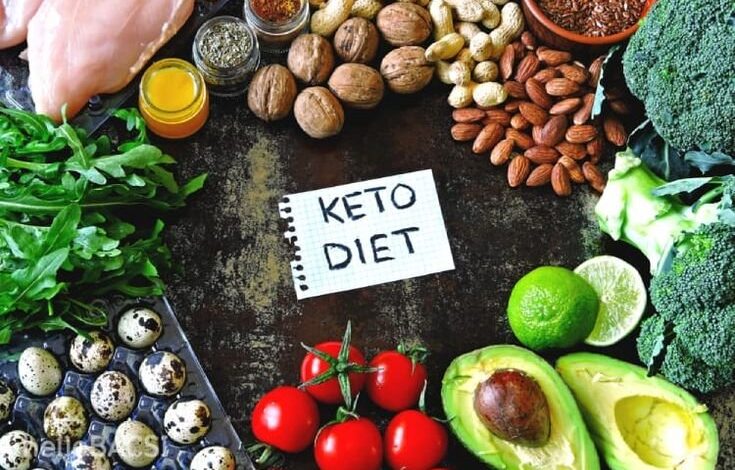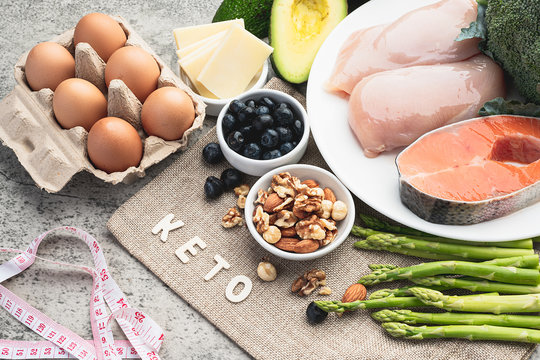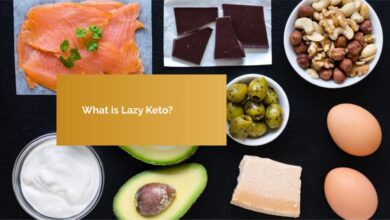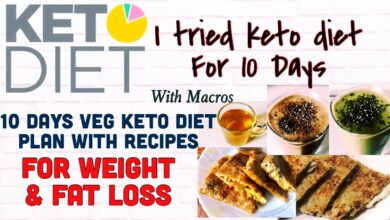
- How to Choose the Best Fruits for a Keto Diet
-
Introduction
- Why fruits can be challenging on keto
- The benefits of adding fruits to your low-carb lifestyle
- Common misconceptions about fruits and ketosis
- Keto Diet Basics
- Understanding Ketosis and Carb Limits
- Net Carbs vs. Total Carbs
- The Role of Fats, Proteins, and Minimal Carbs in Keto
- Why Fruit Selection Matters on Keto
- Glycemic Impact and Blood Sugar Control
- The Importance of Fiber for Satiety and Gut Health
- Vitamins, Minerals, and Antioxidants in Fruit
- Low-Carb vs. High-Carb Fruits
- Identifying Keto-Friendly Fruits
- Fruits to Avoid or Limit
- Portion Control and Carb Budgeting
- The Criteria for Choosing Keto-Friendly Fruits
- Net Carb Calculation
- Fiber Content and Glycemic Load
- Monitoring Sugar-to-Fiber Ratio
- Top Keto-Friendly Fruits
- Avocados
- Healthy Fats and Nutrient Density
- Tomatoes
- Versatility in Keto Recipes
- Olives
- Monounsaturated Fats and Antioxidants
- Berries (Strawberries, Raspberries, Blackberries)
- Low Net Carbs and High Fiber
Lemons and Limes
- Adding Flavor Without Spiking Carbs
- Low Net Carbs and High Fiber
- Avocados
- Other Fruits to Consider on Keto
- Coconut Meat
- Cantaloupe (in moderation)
- Watermelon (in very limited portions)
- Strategies for Including Fruits in Your Keto Meal Plan
- Portion Control and Daily Carb Limits
- Combining Fruits with Fats and Proteins
- Timing Fruit Intake for Best Results
- Creative Ways to Use Keto-Friendly Fruits
- Smoothies, Shakes, and Juices
- Fruit-Based Sauces, Salsas, and Dressings
- Low-Carb Baking and Desserts
- Watching Out for Hidden Carbs
- Dried Fruits and Their Sugar Content
- Fruit Juices and Concentrates
- Net Carbs in Fruit-Based Condiments
- Keto Fruiting Hacks and Substitutions
- Using Extracts and Flavor Essences
- Low-Glycemic Sweeteners and Fruit Alternatives
- Enhancing Flavor with Citrus Zest
- Balancing Keto Fruits with Overall Nutrition
- Adding Veggies and Greens
- Importance of Electrolytes and Hydration
- Ensuring Adequate Protein Intake
- Potential Pitfalls and How to Avoid Them
- Overdoing Fruit Portions
- Letting Fruit Sugars Creep Up
- Ignoring Fiber and Sugar Alcohol Calculations
- Complementary Lifestyle Tips for a Successful Keto Journey
- Consistency and Meal Prep
- Stress Reduction and Quality Sleep
- Exercise and Movement
- Conclusion
- FAQs
- How many servings of fruit can I have each day on keto?
- Can I eat fruit during the early stages of keto?
- Will fruit kick me out of ketosis if I go over my daily carb limit?
- Are fruit-flavored yogurts or toppings safe on keto?
- Is frozen fruit okay for keto-friendly recipes?
How to Choose the Best Fruits for a Keto Diet
Are you following a ketogenic lifestyle but craving something sweet and refreshing? You might think fruit is off-limits due to its sugar content. However, that’s not entirely true! While many fruits can be carb-heavy, there are still plenty of keto-friendly options that offer vitamins, minerals, and antioxidants without derailing your efforts. In this comprehensive guide, we’ll explore how to choose the best fruits for a keto diet—so you can enjoy a little natural sweetness while staying within your carb limits.
Introduction

If you’ve hopped on the keto bandwagon, you likely know just how crucial it is to keep your carbs in check. After all, the entire premise of the ketogenic diet revolves around maintaining a state of ketosis, where your body burns fat for fuel instead of carbohydrates. But does that mean you have to say goodbye to fruit forever?
Not necessarily! The good news is that certain fruits are low in carbs and high in fiber, making them suitable for a well-managed keto meal plan. Think of them as small treats that can help keep your cravings at bay while still providing essential nutrients. Let’s unravel the mystery around fruits and keto, starting with a quick recap of ketogenic diet basics.
Keto Diet Basics
The ketogenic diet is a low-carb, high-fat eating plan that aims to force your body into ketosis. Typically, keto dieters consume about 70–80% of their calories from fat, 10–20% from protein, and around 5–10% from carbohydrates. This dramatic reduction in carbs allows your body to deplete its glucose stores and begin burning fat for energy.
What Is Ketosis?
Ketosis is a metabolic state where your body generates ketones by breaking down fatty acids. While in ketosis, you’ll likely notice stable energy levels, reduced hunger, and even mental clarity. For many people, it’s an efficient way to lose weight or manage certain health conditions.
Macronutrient Ratios and Daily Carb Limits
To maintain ketosis, most keto dieters aim for 20–50 net carbs per day. Net carbs are calculated by subtracting fiber (and sometimes sugar alcohols) from total carbs. Even slight deviations can kick you out of ketosis, so it’s vital to stay vigilant about your carb intake.
Why Low-Carb Matters for Sustained Ketosis
If you consume more carbs than your limit, your body will likely shift back to glucose for fuel, halting fat-burning. This is where fruits get tricky—some are high in sugar and can quickly push you over your carb threshold. But the fruits we’ll discuss later can help you avoid that pitfall.
Why Fruit Selection Matters on Keto
Glycemic Impact and Blood Sugar Control
One major concern with fruit is its sugar content. Sugar spikes your blood glucose, potentially halting ketosis. Focusing on fruits with lower glycemic loads can help you maintain stable blood sugar and minimize insulin spikes.
Importance of Fiber for Satiety and Gut Health
Fiber is a carb that doesn’t significantly affect your blood sugar. Instead, it slows digestion and helps you feel full. Fruits rich in fiber can be more forgiving in a keto meal plan since they result in fewer net carbs.
Vitamins, Minerals, and Antioxidants in Fruit
It’s easy to overlook micronutrients when you’re busy counting macros. However, vitamins, minerals, and antioxidants are crucial for overall health and immunity. Incorporating the right fruits can help you meet these micronutrient needs without a carb overload.
Low-Carb vs. High-Carb Fruits
Identifying Keto-Friendly Fruits
Some fruits are naturally lower in sugar and higher in fiber. These are the keto-friendly options that allow you to enjoy natural sweetness without pushing you out of ketosis. Think berries, avocados, olives, and more.
Fruits to Avoid or Limit
Bananas, mangoes, grapes, and cherries often contain higher sugar levels and can eat up your carb budget fast. While you don’t have to ban them completely, it’s wise to keep them limited or save them for a treat day, depending on your specific carb goals.
Portion Control and Carb Budgeting
Even if a fruit is keto-friendly, portion size matters. A small handful of berries might be fine, but a giant bowl could quickly exceed your net carb limit. Always measure or estimate your servings to stay on track.
The Criteria for Choosing Keto-Friendly Fruits
Net Carb Calculation
Net carbs are the total carbs minus fiber. By focusing on fruits with lower net carbs, you can enjoy them while still maintaining ketosis. Always check nutrition labels or reliable databases for accurate net carb counts.
Fiber Content and Glycemic Load
Fruits that are higher in fiber generally have a lower glycemic load. This means they cause a slower, smaller spike in blood sugar. For someone on keto, high-fiber, low-sugar fruits are golden.
Monitoring Sugar-to-Fiber Ratio
A good rule of thumb is to look for fruits with a relatively high ratio of fiber to sugar. This ratio helps minimize the net carbs that could knock you out of ketosis.
Fruit #1: Avocado
Nutrient Profile and Healthy Fats
You might be surprised to see avocado on a fruit list, but it’s technically a berry—one that’s packed with heart-healthy monounsaturated fats. Avocados can provide a creamy texture to your meals, acting as a satisfying alternative to carb-heavy items.
Fiber Content and Net Carb Calculation
One medium avocado has around 12–13 grams of carbs, but roughly 10 of those are fiber, leading to just 2–3 net carbs. This makes avocado a true keto rock star, perfect for guacamole or as a topping for salads.
Ways to Incorporate Avocado into Keto Meals
Spread avocado on keto bread, blend it into a smoothie, or stuff it with tuna or chicken salad. The possibilities are endless and can add a rich, buttery flavor to your dishes.
Fruit #2: Olives
Why Olives Are Technically Fruits
Olives grow on trees and contain seeds, meeting the botanical definition of fruit. They’re also a staple in many low-carb diets, including keto, due to their low net carb content and savory flavor.
Monounsaturated Fats and Anti-inflammatory Benefits
Like avocados, olives are packed with monounsaturated fats that help reduce inflammation and support heart health. These fats can also assist in maintaining ketosis by supplying your body with a readily available energy source.
Low Net Carb Counts for Keto Success
A small handful of olives typically contains just 2–3 grams of net carbs. This makes them an excellent snack or garnish for keto meals, adding both flavor and nutritional value.
Fruit #3: Tomatoes
Carb Counts and Glycemic Load
Tomatoes often function as vegetables in cooking, but they’re actually fruits. One medium tomato has around 4–5 grams of total carbs, but they’re relatively low in sugar, making them acceptable in moderation on keto.
Antioxidants and Vitamins for Immune Support
Tomatoes are rich in vitamins C and A, along with antioxidants like lycopene. These nutrients may help bolster your immune system and protect cells from oxidative stress.
Creative Keto-friendly Recipes with Tomatoes
Use tomatoes in salads, soups, or sauces for a fresh burst of flavor. Stuff them with cheese and spices, or roast them with olive oil for a low-carb side dish.
Fruit #4: Cucumbers
High Water Content for Hydration
Cucumbers are technically fruits, too, and they’re mostly water—making them a hydrating, low-calorie, and low-carb option for keto. They can be a lifesaver when you crave something crunchy.
Minimal Net Carbs and Fiber Benefits
With just about 3–4 grams of carbs per cup—half of which is fiber—cucumbers fit easily into your daily carb quota. They also help you feel satiated and refreshed.
Ideas for Keto Cucumber Snacks and Meals
Slice cucumbers into chips for dipping in cream cheese or guacamole. You can also spiralize them for cucumber noodles or add them to your favorite low-carb salad.
Fruit #5: Bell Peppers
Vitamin C Powerhouse with Limited Carbs
Bell peppers are a great way to get a dose of vitamin C without spiking your carbs too much. A medium bell pepper contains about 6–8 grams of carbs, including fiber, making them manageable on a keto diet.
Varieties of Bell Peppers and Their Carb Profiles
Green peppers generally have fewer carbs than red, orange, or yellow peppers. However, each color offers unique antioxidants and flavors, so pick what suits your carb budget.
Keto-friendly Ways to Use Bell Peppers in Cooking
You can stuff bell peppers with ground beef and cheese, dice them into omelets, or slice them up for low-carb fajitas. They add crunch and color to your meal plan.
Fruit #6: Zucchini
Versatile “Fruit” with Low Net Carbs
Zucchini is another one of those sneaky fruits that we treat like a vegetable. Its net carbs remain relatively low, about 3 grams per cup, which is ideal for keto.
Zucchini Noodles and Other Keto Hacks
Spiralize zucchini into noodles to replace high-carb pasta, or slice it for zucchini lasagna layers. These low-carb alternatives let you enjoy your favorite dishes minus the carb overload.
Pairing Zucchini with Healthy Fats for Better Meals
Zucchini’s mild flavor makes it perfect for absorbing sauces and spices. Drizzle it with olive oil, top with cheese, or stir-fry in coconut oil for a flavorful, keto-compliant dish.
Fruit #7: Eggplant
Fiber-rich and Moderate Carb Content
Eggplant’s carb content can be a bit higher than some other options on this list, but it’s still feasible on keto, especially if you’re mindful of portion sizes. Its fiber helps keep net carbs low and supports digestive health.
Antioxidants and Their Role in Overall Health
Eggplant’s purple skin is loaded with anthocyanins, antioxidants that may help reduce inflammation and support heart health. This is a bonus for anyone prioritizing both immunity and well-being on keto.
Keto Eggplant Dishes and Cooking Methods
Roast eggplant with olive oil, garlic, and herbs, or use it as a substitute for noodles in a low-carb lasagna. You can also bake eggplant slices topped with cheese and keto-friendly marinara sauce.
Fruit #8: Strawberries
Net Carbs, Sugar Content, and Portion Control
Strawberries can be a delightful treat if you’re craving something sweet on keto. About 8 medium strawberries yield roughly 6 grams of carbs, 2 of which are fiber, making them about 4 net carbs total.
Antioxidants, Vitamins, and Polyphenols
These bright red berries are rich in vitamin C, manganese, and various antioxidants. They help fight inflammation, can improve heart health, and add natural sweetness to your diet.
Tips for Enjoying Strawberries Without Breaking Ketosis
Stick to small servings and pair them with healthy fats, like whipped cream or a sugar-free chocolate drizzle, to moderate your carb intake and keep cravings under control.
Fruit #9: Raspberries
Balancing Sweetness and Carb Limits
Raspberries offer a sweet-tart flavor with minimal carbs—a cup contains around 7 net carbs. Thanks to their fiber, they’re often included in lists of the best keto-friendly fruits.
High Fiber Content for Net Carb Reduction
One of the main reasons raspberries are keto-approved is their impressive fiber content, which can help you feel fuller longer and stabilize blood sugar levels.
Keto-friendly Desserts and Snack Ideas
Consider making a raspberry coulis for low-carb cheesecake or tossing a handful into your morning smoothie. Their vibrant color and tangy sweetness make them a versatile fruit for keto dieters.
Fruit #10: Blackberries
Low Net Carbs and Robust Antioxidant Profile
Like raspberries, blackberries are relatively low in net carbs, offering around 6 net carbs per cup. They’re also loaded with antioxidants that can help protect cells from oxidative stress.
Using Blackberries in Keto Breakfast and Dessert
Start your day with a blackberry parfait using Greek yogurt (or a keto-friendly alternative) and nuts. For dessert, whip up a blackberry sauce to drizzle over sugar-free ice cream or keto pancakes.
Pairing Blackberries with Healthy Fats for Satiety
Blackberries’ natural sweetness pairs well with high-fat foods like cheese, cream, or nuts. This combination keeps you satisfied while controlling your net carb intake.
Tips for Selecting and Storing Keto-Friendly Fruits
Buying Fresh vs. Frozen Produce
Fresh fruits are typically more flavorful, but frozen can be just as nutritious and often more convenient. Look for frozen options with no added sugars or syrups.
Storage Techniques to Preserve Nutrients
Store berries and other delicate fruits in the refrigerator to maintain freshness. Avocados and tomatoes can ripen at room temperature before being moved to the fridge.
Net Carb Tracking and Portion Guidance
Use a food scale or measuring cup for accuracy when tracking fruit portions. Even low-carb fruits can push you out of ketosis if you overeat them.
Complementary Lifestyle Habits for Keto Success
Hydration and Electrolyte Balance
Drinking enough water is crucial, especially since keto can cause you to lose electrolytes more rapidly. Replenishing electrolytes helps you avoid the dreaded “keto flu.”
The Importance of Quality Sleep for Metabolism
Poor sleep can spike stress hormones, hamper weight loss, and even push your body to crave carbs. Aim for 7–9 hours of restful sleep each night to support ketosis and overall health.
Exercise and Movement
Regular physical activity complements the keto diet by increasing insulin sensitivity and helping your body use carbs more efficiently. It can also speed up the process of entering ketosis.
Potential Pitfalls and Mistakes on Keto
Overeating Fruit Sugars and Stalling Ketosis
It’s easy to go overboard with fruit, especially when it tastes so good. Monitor your intake to avoid surpassing your carb limit and knocking yourself out of ketosis.
Ignoring Hidden Carbs in Fruit-Based Products
Be wary of pre-packaged fruit sauces, dried fruits, or canned fruits in syrup. These often contain added sugars that can quickly add up.
Balancing Fruit Intake with Protein and Fat Macros
Make sure you’re not replacing essential fats or proteins with too many fruit carbs. The mainstay of keto is still high fat and moderate protein, so keep your ratios aligned.
Conclusion
Choosing the best fruits for a keto diet doesn’t have to be a challenge. By focusing on low-carb, high-fiber options like berries, avocados, and certain “vegetable-like” fruits such as tomatoes and cucumbers, you can enjoy the natural sweetness of fruit without derailing your ketogenic progress. Being mindful of portion sizes, net carbs, and how these fruits fit into your overall macros will set you up for long-term success on keto.
Keep in mind that everyone’s carb tolerance varies. Pay attention to your body’s reactions, track your macros, and tweak your fruit choices as needed. With these tips and guidelines, you can savor the flavors of fruit while still reaping the benefits of a fat-fueled lifestyle.
read also: 10 Fruits for a Keto Diet; A Complete Guide.
FAQs https://en.wikipedia.org/wiki/FAQ
- How many servings of fruit can I have each day on keto?
Most people on keto aim for 20–50 net carbs daily. Depending on the fruits you choose, you might enjoy 1–2 servings per day. Always track net carbs to ensure you don’t exceed your limit. - Can I eat fruit during the early stages of keto?
It’s generally best to keep fruit intake minimal in the initial stages of keto as your body adapts. After you’re fat-adapted, you can carefully add low-carb fruits to see how your body responds. - Will fruit kick me out of ketosis if I go over my daily carb limit?
Yes, consistently exceeding your carb limit can disrupt ketosis. If you find that a fruit pushes you over, reduce your portion or choose fruits with lower net carbs. - Are fruit-flavored yogurts or toppings safe on keto?
Many fruit-flavored yogurts or toppings contain added sugars that can spike carbs. If you like yogurt, opt for plain, full-fat versions and add your own low-carb fruit to control sugar intake. - Is frozen fruit okay for keto-friendly recipes?
Frozen fruit is often just as nutritious as fresh, provided it doesn’t contain added sugars. Check labels and opt for plain, unsweetened frozen fruits for your keto smoothies or desserts.





One Comment